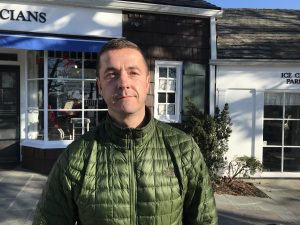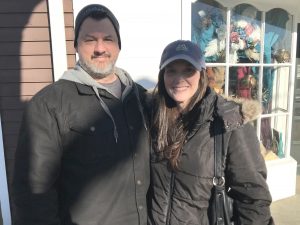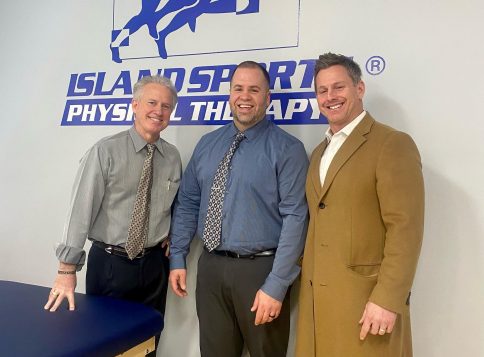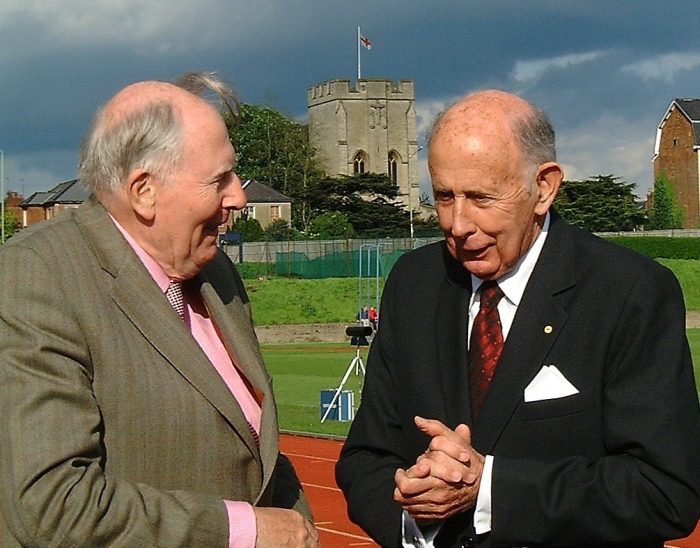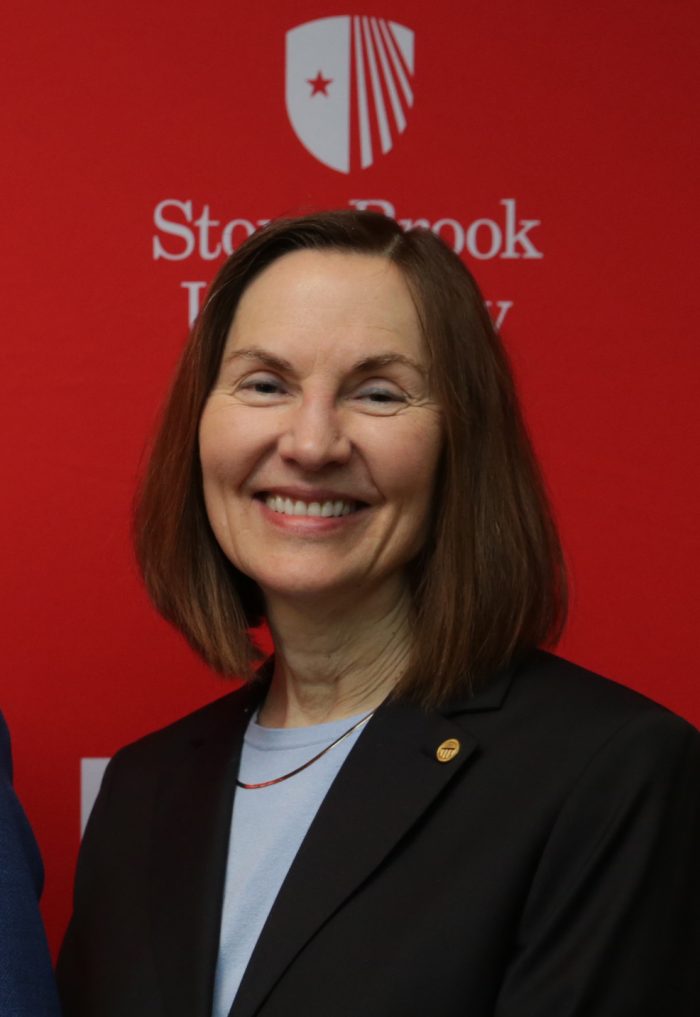Ukrainian and Russian émigrés, Ukrainian-Americans, local elected officials and Long Islanders of various political stripes demonstrated their support for the defense of Ukrainian sovereignty and against Russian President Vladimir Putin’s illegal war initiated in the wee hours of Feb. 24 against Ukraine.

While some people rally together in their support for Ukraine, others find their way to church sanctuaries to offer prayers for the safety of Ukrainian soldiers and citizens, who are also taking up arms in defense of their homeland.
Anna Konny, from Vinnytsia, Ukraine, a dental hygienist and U. S. citizen, who lives in Woodmere, attended a rally in Lindenhurst at Babylon Town Hall with her aunt, Nataliya Soliternik, who lives now in Hewlett.
Konny, draped in the Ukrainian flag, was a vocal advocate for those defending Vinnytsia, a city in west-central Ukraine. She has been able to stay in touch with family and friends who are still in Ukraine by using free calling cards provided by Verizon, T-Mobile and other major communication carriers.
The dental hygienist showed photos of families using subway stations and basements of municipal buildings as bomb shelters. She claimed these shelters are also being used at night by saboteurs and Russian infiltrators as they hide among the patriots they seek to destroy. By day, these infiltrators use luminous paint to paint the roofs of buildings, barricades and other locations to be targeted during nighttime bombings and artillery shelling.
Konny advocates for weapons and ammunition to be sent to those fighting from World War I-style trenches surrounding the cities and towns. Someone in the crowd asked if she feared reprisals. Konny’s answer was a firm, “No. If these photos get back to Ukraine, I want my friends and family to know that I stand with them.”
Suffolk County Legislator Kevin McCaffrey (R-Lindenhurst), presiding officer of the Legislature, saw Konny and came over to hear her pleas for aid, both military and medical first aid materials. After speaking with Konny, McCaffrey addressed the crowd to resounding applause. “It is appalling what Vladimir Putin is doing, how he is attacking a sovereign nation like Ukraine,” he said. “It makes us wonder who is next. The Ukrainian people have done nothing to incur the wrath of Vladimir Putin. All of us are encouraged by the fight of the Ukrainian people, who are standing against this aggression. I believe the U.S. should do more to stand up for the Ukrainian people.”
Janet Byler, from Huntington, has children serving in the U. S. Army based in Fort Bragg, North Carolina. She felt compelled to attend the rally to support those serving with NATO forces in Europe. Mark Czachor, of West Babylon, said, “Every American should be supporting Ukraine’s fight. As long as we don’t give up, Putin can’t win.”
On Friday, Feb. 25, the Rev. Bohdan Hedz of St. John the Baptist Ukrainian Catholic Church in Riverhead opened the sanctuary to a resident of Texas, who was born and raised in the Riverhead area. He had returned recently to care for his very elderly parents. He had missed the service which had been celebrated earlier that day but was welcomed by Bohdan to pray in the quiet and intimate sanctuary. Unafraid of reprisals, the gentleman, who wished anonymity for personal privacy reasons, spoke of marrying his Ukrainian wife in Kyiv.
“My wife would leave today to take up arms,” he said. “The world is called to speak and to act. Ukraine will fight!”
During this conversation, a woman from the congregation of St. John the Baptist R.C. Church in Wading River came in with an offering of a bouquet of red roses and a prayer. It was her way of giving support to the local Ukrainian community.
Hedz and his congregation have been raising funds and material support for Ukrainian defense since the Russian invasion of the country in 2014 that resulted in the annexation of Crimea. Hedz expressed the belief that “Putin will not stop at Ukraine.”
With this greater invasion into the whole of Ukraine, Hedz said the defenders of Ukraine need warm winter clothing, personal hygiene medications such as pain relievers, cold and flu treatments, and first aid supplies for treating wounds.
Donations can be dropped off any time at St. John the Baptist Ukrainian Catholic Church located at 820 Pond View Road, Riverhead. If the sanctuary doors are locked, one may call the reverend at 631-727-2766.




